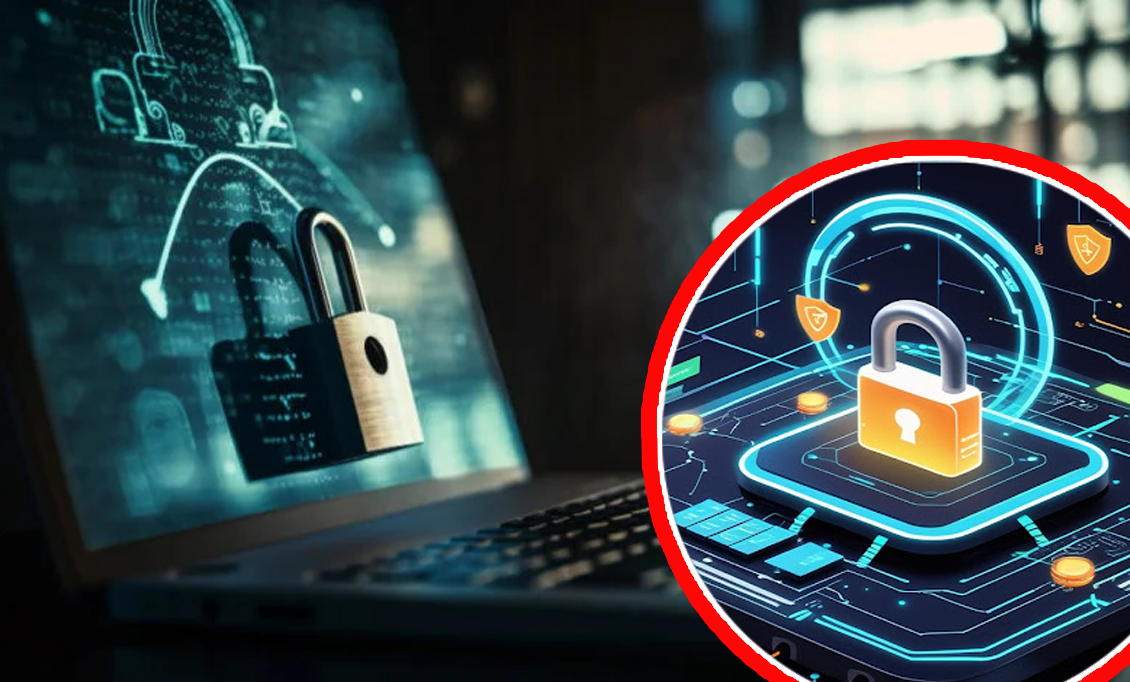The world of data leaks has witnessed some shocking incidents over the years, but the thejavasea.me leaks aio-tlp287 event stands out for its scope and impact. This breach not only raised questions about the vulnerabilities within a seemingly secure environment but also triggered discussions about the wider implications of data security in today’s digital age. In this comprehensive guide, we will explore everything you need to know about the thejavasea.me leaks aio-tlp287 incident — from what happened and how it occurred, to its consequences and what can be done to prevent such incidents in the future.
What Is the thejavasea.me Leaks AIO-TLP287 Incident?
At its core, the thejavasea.me leaks aio-tlp287 incident refers to a breach of sensitive data from the website TheJavaSea.me. This leak, identified as “AIO-TLP287,” involved the unauthorized exposure of private and often valuable information. While the details surrounding the leak are still unfolding, its significance cannot be overstated. It is important to understand that this incident is not isolated; rather, it’s a reflection of an increasingly complex digital landscape where data breaches occur more frequently than one might expect.
The thejavasea.me leaks aio-tlp287 event came to light when hackers exploited a vulnerability in the website’s security measures, which led to the leaking of confidential data. This kind of breach typically happens when websites or platforms fail to protect sensitive information adequately, allowing cybercriminals to access and share it widely.
How Did the Leak Happen?
The exact cause behind the thejavasea.me leaks aio-tlp287 is still under investigation, but there are a few common factors that contribute to data leaks like this. One possibility is a technical vulnerability — such as a flaw in the website’s infrastructure or a weakness in its encryption protocols. Cybercriminals are often quick to exploit such weaknesses, gaining access to databases that contain sensitive information.
Another plausible scenario is human error or negligence. In many cases, data breaches can occur due to poor security practices, such as weak passwords, unpatched software, or failure to implement advanced security measures like two-factor authentication. Regardless of the cause, the leak has raised significant concerns about how such data can be misused and what measures could have prevented the breach from happening in the first place.
The Immediate Impact of the thejavasea.me Leaks AIO-TLP287
The fallout from the thejavasea.me leaks aio-tlp287 was immediate and widespread. Upon discovering the breach, TheJavaSea.me’s team was forced to scramble and take emergency actions to contain the leak. Despite their efforts, the leaked data spread quickly across the internet, causing damage to the reputation of the website and raising alarm within the digital community.
One of the most immediate impacts of the leak was the exposure of sensitive data. This could include everything from personal information of users, to business-critical data, or intellectual property that could lead to financial losses or reputational harm for affected entities. The hackers responsible for the breach likely had malicious intent, seeking to exploit the information for financial gain, blackmail, or other forms of manipulation.
Beyond the immediate damage to those directly involved, the thejavasea.me leaks aio-tlp287 incident also sent shockwaves through the broader digital community. It served as a wake-up call for businesses and individuals alike, reinforcing the need for stronger security protocols to safeguard against such breaches.
Long-Term Effects of the thejavasea.me Leaks AIO-TLP287
While the immediate fallout from the thejavasea.me leaks aio-tlp287 was damaging, the long-term effects are likely to be even more profound. One of the most significant consequences is the erosion of trust. For any platform or business, trust is paramount, and once that trust is broken, it can be incredibly difficult to rebuild. Users and customers who once relied on TheJavaSea.me for secure interactions may now be hesitant to engage with the platform in the future.
In addition to trust issues, the thejavasea.me leaks aio-tlp287 has triggered a wave of legal and regulatory scrutiny. Data protection laws such as the GDPR (General Data Protection Regulation) in Europe impose strict requirements on businesses to protect personal data. The JavaSea.me could face legal action if it is found to have failed in its obligations to secure sensitive information.
Furthermore, the long-term impact extends to the broader cybersecurity landscape. The breach has underscored the critical need for businesses to implement stronger safeguards and more rigorous cybersecurity policies. Without these protections in place, companies risk exposing their data and putting their users at risk of identity theft, fraud, and other malicious activities.
What Was Leaked in the AIO-TLP287 Incident?
Understanding the scope of what was leaked in the thejavasea.me leaks aio-tlp287 incident is crucial to evaluating its impact. While the exact details of the data leaked are not entirely clear, it is likely that a wide range of sensitive information was compromised. This could include personal user data such as names, email addresses, passwords, and other personally identifiable information (PII). In addition, proprietary business data, including intellectual property or confidential communications, could have been exposed, causing significant financial and operational harm to the affected parties.
The breadth of the leak, if it involved large quantities of data from various sources, suggests that it could have far-reaching consequences for individuals and organizations alike. The potential for this data to be misused by cybercriminals adds a layer of severity to the incident, highlighting the critical need for swift action and robust recovery plans.
The Broader Implications of the AIO-TLP287 Leak
The thejavasea.me leaks aio-tlp287 incident also holds broader implications for the digital landscape. In an age where almost every aspect of life is interconnected online, a data breach like this raises important questions about the effectiveness of current cybersecurity measures. As businesses and individuals increasingly rely on digital platforms to store and manage sensitive information, the risk of such breaches only grows.
This incident also shines a spotlight on the importance of transparency and accountability when it comes to data security. Organizations must take proactive steps to ensure that their systems are secure and that their customers’ data is protected. The thejavasea.me leaks aio-tlp287 incident serves as a stark reminder that even the most secure platforms can be vulnerable if proper safeguards are not in place.
How to Prevent Future Leaks Like AIO-TLP287
The thejavasea.me leaks aio-tlp287 serves as a critical lesson in the importance of cybersecurity. While it is impossible to guarantee 100% protection from data breaches, there are several best practices that businesses and individuals can implement to reduce the risk of leaks.
For businesses, adopting a multi-layered approach to cybersecurity is essential. This includes using strong encryption methods, regularly updating and patching software, and conducting regular security audits. Implementing multi-factor authentication (MFA) can further strengthen security by requiring users to verify their identity through multiple channels.
For individuals, it’s important to take personal responsibility for data security. Using strong, unique passwords for each account and being cautious about sharing personal information online can help protect against unauthorized access. Additionally, staying informed about the latest cybersecurity threats and using tools like virtual private networks (VPNs) and antivirus software can add another layer of protection.
Legal and Ethical Considerations of Data Leaks
Beyond the technical and practical implications, the thejavasea.me leaks aio-tlp287 incident also raises important legal and ethical issues. Legally, organizations must adhere to strict data protection regulations to avoid penalties and lawsuits. For instance, under the GDPR, companies that suffer a data breach must notify affected individuals and take remedial actions to mitigate harm. The JavaSea.me could face significant legal challenges if it is found to have violated these obligations.
Ethically, businesses have a responsibility to safeguard the privacy of their users and customers. Failing to do so can result in reputational damage, loss of trust, and significant financial consequences. The thejavasea.me leaks aio-tlp287 incident serves as a stark reminder of the ethical duty that organizations have to protect the data they collect and to be transparent when breaches occur.
Protecting Yourself from Data Leaks Like AIO-TLP287
The thejavasea.me leaks aio-tlp287 incident highlights the importance of taking steps to protect oneself from data breaches. Individuals can take several proactive measures to secure their online presence, such as using strong, unique passwords for each account, avoiding public Wi-Fi networks when handling sensitive information, and regularly reviewing privacy settings on social media platforms.
For businesses, the key to preventing data leaks lies in creating a culture of security. Regular training for employees on best practices, conducting security audits, and investing in cutting-edge cybersecurity technology are all essential steps in safeguarding sensitive data. Additionally, having an incident response plan in place can ensure that, if a breach does occur, the company is prepared to act quickly and mitigate damage.
Also Read This Blog: Is Xovfullmins Dangerous? What You Need to Know
Conclusion
The thejavasea.me leaks aio-tlp287 incident serves as a powerful reminder of the importance of cybersecurity in the digital age. As cyber threats become more sophisticated, it is essential for both businesses and individuals to take proactive steps to protect sensitive information. By understanding the causes and consequences of data leaks like AIO-TLP287, we can better prepare for the challenges ahead and work towards creating a safer online environment for all.
FAQs
1. What is the thejavasea.me leaks aio-tlp287 incident?
The thejavasea.me leaks aio-tlp287 incident refers to a data breach that exposed sensitive information from the website TheJavaSea.me. The breach, which occurred due to a security vulnerability, led to the unauthorized access and distribution of confidential data.
2. How did the leak happen?
The leak likely resulted from a combination of technical vulnerabilities and potentially inadequate security measures. Hackers exploited these weaknesses to gain access to sensitive data, which was then leaked across various platforms.
3. What kind of data was exposed in the leak?
The leaked data could include personal user information such as names, email addresses, and passwords, as well as potentially more sensitive business data. The exposure of such data can have serious consequences for both individuals and organizations.
4. What impact did the leak have?
The immediate impact included damage to the reputation of TheJavaSea.me and the widespread distribution of sensitive data. Long-term effects include a loss of trust, potential legal ramifications, and broader concerns about cybersecurity in the digital space.
5. How can individuals and businesses protect themselves from similar leaks?
To prevent similar incidents, individuals should use strong passwords, enable two-factor authentication, and remain vigilant for phishing attempts. Businesses must implement robust cybersecurity protocols, regular security audits, and employee training to protect sensitive information.

